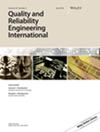基于混合扩张卷积传递的滚动轴承剩余使用寿命预测方法
IF 2.8
3区 工程技术
Q3 ENGINEERING, INDUSTRIAL
引用次数: 0
摘要
由于实际工程中某些运行条件下的训练样本有限且缺乏寿命标签,因此很难有效预测剩余使用寿命(RUL)。现有的深度学习方法在使用其他工况下训练的模型预测此类工况下设备的剩余使用年限时,由于分布差异较大导致模型泛化能力差的问题不容忽视。本研究提出了一种基于集成扩张卷积传递的 RUL 预测方法。该方法通过对 RUL 预测模块和域自适应模块的损失函数进行反演,共同调整模型参数,然后通过特征提取模块实现不同工况数据之间的域不变特征提取,为不同工况之间的 RUL 转移预测提供支持。在特征提取模块中,大尺寸核的一维卷积网络降低了原始数据中的噪声,减少了噪声对原始数据趋势表达的错误影响,混合扩张卷积网络提取了降噪后数据的不同感知场特征,增加了提取特征的丰富性,从而提高了建模的准确性。然后,将提取的特征输入 RUL 预测模块,以预测 RUL;输入域适应模块中的分类模型,以划分源域和目标域;输入域适应模块中的分布差异测量模型,以识别源域和目标域之间的特征分布差异,并通过减少分布差异来反向调整模型参数。此外,还可获得多种操作条件下不同感受野中的特征的域不变特性,以增强模型的泛化能力,实现不同操作条件下的 RUL 预测。蒙特卡罗(MC)漏失模拟技术用于量化预测结果的不确定性。最后,利用 2012 年轴承预报和健康管理(PHM)数据集验证了所提方法的有效性和优越性。本文章由计算机程序翻译,如有差异,请以英文原文为准。
Remaining useful life prediction method for rolling bearings based on hybrid dilated convolution transfer
It is difficult to effectively predict remaining useful life (RUL) due to limited training samples and lack of life labels in some operating conditions of practical engineering. When existing deep learning methods predict the RUL of equipment in such operating conditions using a model trained on other operating conditions, the poor generalization of the model caused by large distribution differences cannot be ignored. In this study, an RUL prediction method based on integrated dilated convolution transfer is proposed. This method jointly adjusts the model parameters by inverting the loss function of the RUL prediction module and the domain adaptive module, and then realizes the extraction of domain‐invariant features between different operating condition data through the feature extraction module, which provides support for transfer RUL prediction between different operating conditions. In the feature extraction module, a one‐dimensional convolution network with a large‐size kernel reduces noise in the original data, which reduces the erroneous effect of noise on the trending expression of the original data, and a hybrid dilated convolution network extracts the features of the different sensory fields of the noise‐reduced data, which increases the richness of the extracted features and thus improves the accuracy of the modeling. Next, the extracted features are fed into the RUL prediction module to predict RUL; into the classification model in the domain adaptation module to divide the source and target domains; and into the distribution difference measurement model in the domain adaptation module to identify the feature distribution differences between the source and target domains, and inversely adjust the model parameters by reducing the distribution differences. Furthermore, domain invariant characteristics of the features in different receptive fields under multiple operating conditions are obtained to enhance the model's generalization ability and achieve RUL prediction across various operating conditions. Monte Carlo (MC) dropout simulation technology is used to quantify the uncertainty of prediction results. Finally, the effectiveness and superiority of the proposed method are verified using the prognostics and health management (PHM) 2012 bearing dataset.
求助全文
通过发布文献求助,成功后即可免费获取论文全文。
去求助
来源期刊
CiteScore
4.90
自引率
21.70%
发文量
181
审稿时长
6 months
期刊介绍:
Quality and Reliability Engineering International is a journal devoted to practical engineering aspects of quality and reliability. A refereed technical journal published eight times per year, it covers the development and practical application of existing theoretical methods, research and industrial practices. Articles in the journal will be concerned with case studies, tutorial-type reviews and also with applications of new or well-known theory to the solution of actual quality and reliability problems in engineering.
Papers describing the use of mathematical and statistical tools to solve real life industrial problems are encouraged, provided that the emphasis is placed on practical applications and demonstrated case studies.
The scope of the journal is intended to include components, physics of failure, equipment and systems from the fields of electronic, electrical, mechanical and systems engineering. The areas of communications, aerospace, automotive, railways, shipboard equipment, control engineering and consumer products are all covered by the journal.
Quality and reliability of hardware as well as software are covered. Papers on software engineering and its impact on product quality and reliability are encouraged. The journal will also cover the management of quality and reliability in the engineering industry.
Special issues on a variety of key topics are published every year and contribute to the enhancement of Quality and Reliability Engineering International as a major reference in its field.

 求助内容:
求助内容: 应助结果提醒方式:
应助结果提醒方式:


